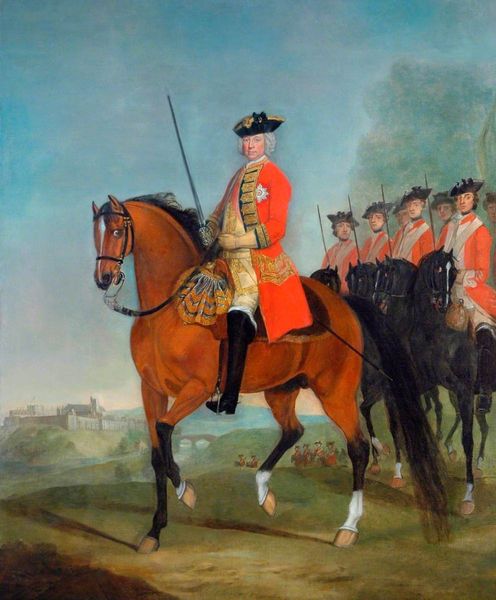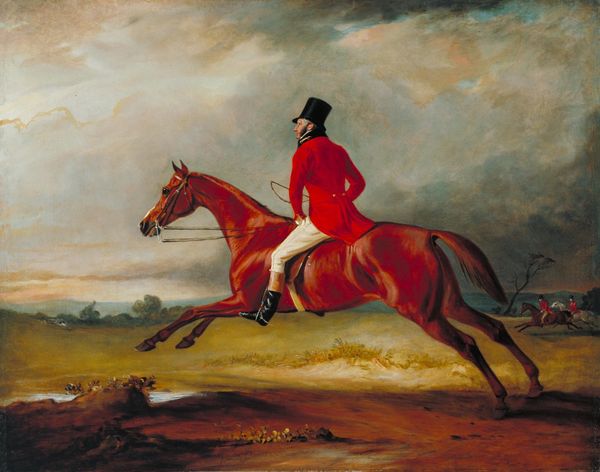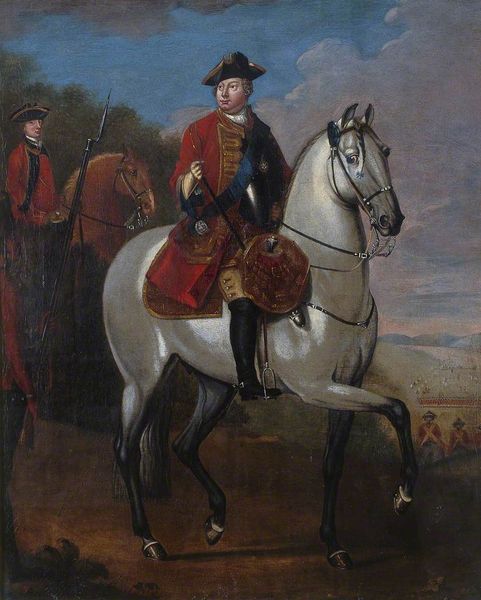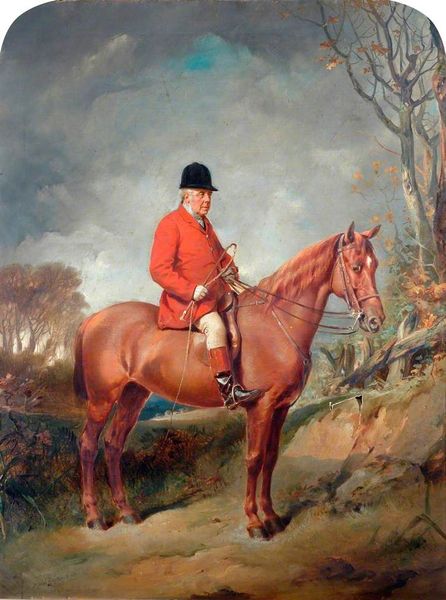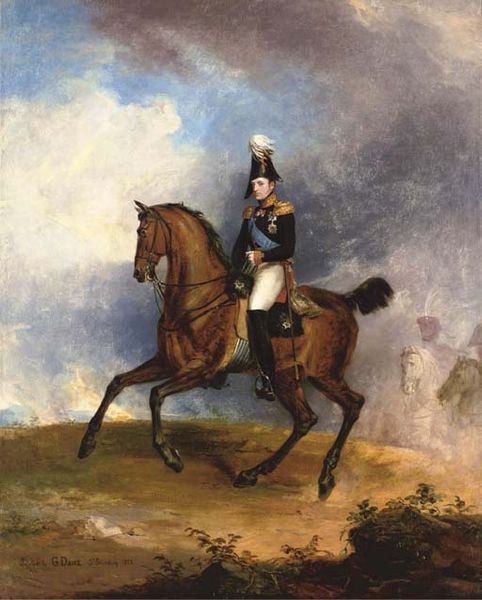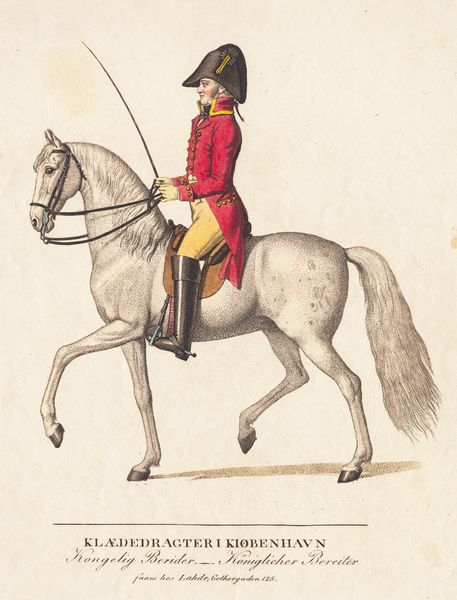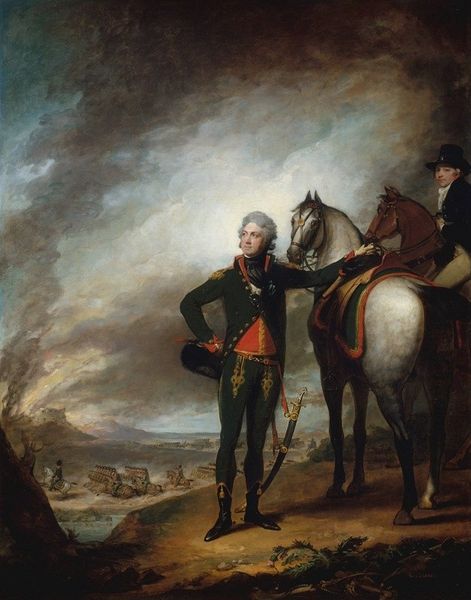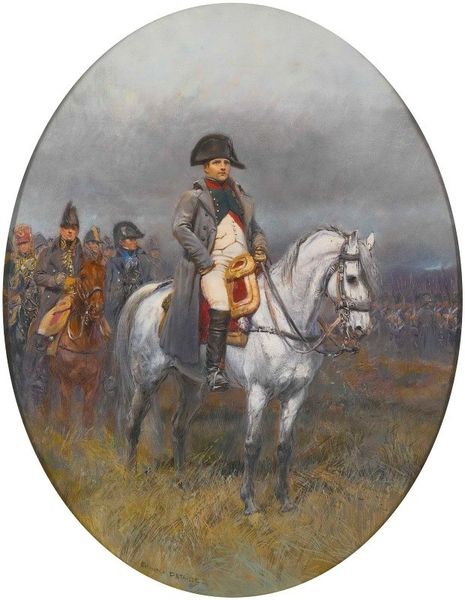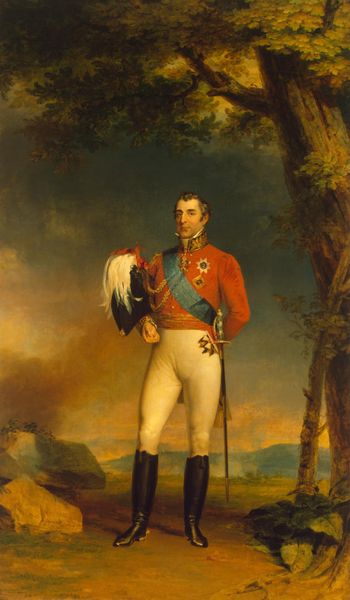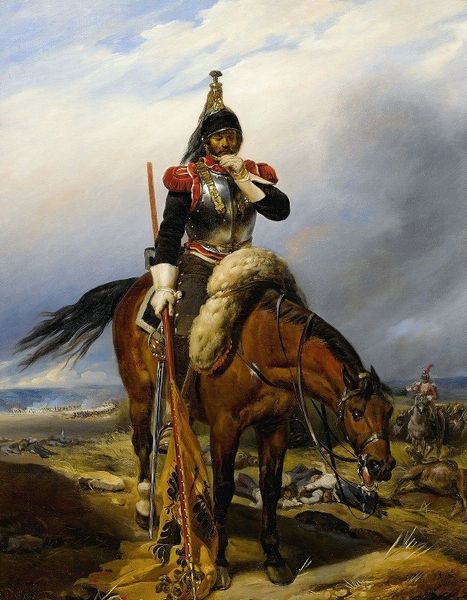
Copyright: Public domain
Editor: So here we have Domingos Sequeira's "Equestrian Portrait of John V of Portugal," created in 1803 using oil paint. It’s very regal; the bright colors and detailed attire certainly convey power and authority. How would you interpret this piece? Curator: This portrait is intriguing when considered through its material production. Think about the pigment: where did Sequeira source his vivid reds and yellows? What labor was involved in grinding, mixing, and applying these colors to the canvas? The rich materials signify not just wealth, but also Portugal's participation in global trade networks, including exploitation. Editor: That’s an interesting way to look at it; I hadn’t considered the material origins of the paint itself. Curator: Exactly. Consider the canvas too - linen likely imported, stretched and prepared through various artisan workshops. Also, the gold trim on the horse's saddle. How does that contribute to the overall image of power and privilege? We are encouraged to consider labor, materiality, and consumption within the canvas. Editor: I suppose that emphasis on the material aspects shifts the focus from simply admiring the King to thinking about the systems that support him. Curator: Precisely. Think of it like this: is this portrait more about John V or about the vast material and social infrastructure required to create his image? This is very indicative of a shifting of high art and craft and how the two are interdependent of one another. Editor: It definitely gives me a new perspective to appreciate beyond just the subject matter. Curator: Absolutely. And that is the benefit of engaging with materiality in art, for we can unpack complex social structures within its making and meaning.
Comments
No comments
Be the first to comment and join the conversation on the ultimate creative platform.
